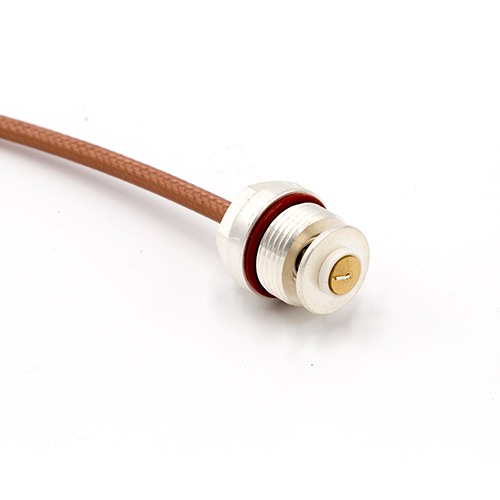High-frequency cables

High frequency cables for fast transmission – in highest quality
CiS assembles and tests assemblies of high-frequency connectors and high-frequency cables at the highest quality level.
Where are high-frequency cables used?
Assembled high-frequency cables (HF cables) are used in all systems with transmissions of high-frequency, analog and digital signals. Applications include, for example, systems for measurement technology, material analysis, data, mobile communications, TV and broadcasting transmission. Industries include automotive, medical, data, telecommunications, and aerospace and military.
How is a high-frequency cable constructed?
High-frequency cables often have a coaxial structure (coaxial cable), consisting of inner and outer conductors. The space between these conductors consists of a dielectric, which significantly affects the high-frequency transmission characteristics. In detail, the structure from the inside to the outside is as follows:
Signal-carrying inner conductor
The conductor usually consists of copper wire or a multi-core stranded wire. The advantage of a single wire is the higher electrical load capacity of the cable and the better attenuation. On the other hand, the multi-core stranded wire has the property of a significantly higher flexibility.
Dielectric
The dielectric forms the non-conductive substance of an RF cable and significantly influences the high-frequency properties in transmission. Special care is required during processing in order not to impair the transmission properties characterized by parameters such as characteristic impedance, line attenuation and reflection attenuation. The dielectric consists of different materials: A dielectric made of polyethylene (PE) is mainly used for applications at high temperatures. In addition, a low attenuation of the cable is achieved. If polytetrafluoroethylene (PTFE) is used as the material for the dielectric, a lower density is achieved.
Shielding
The shielding is also referred to as the outer conductor and consists of a foil or braided shield. Depending on the material, different frequency ranges or shielding attenuations are achieved. A combination of foil and braided shielding is also possible in the manufacture of high-frequency cables.
Cable sheath
The cable sheath provides mechanical protection for RF cables. Flexible solutions are particularly in demand here. Other properties – depending on the application scenario – are also important. For example, resistance to chemicals or extreme temperatures are among them. Various fire protection requirements must also be met in certain cases.
Twisted pair and RF cables
The data lines with twisted pairs of different categories that are widespread in today’s data networks are also RF cables. In this technology, unshielded or shielded RJ45 connectors are the most common.
In RF assembly, special attention must be paid to the processing of the cable shield. This usually consists of a metal band (aluminum), a braided shield or a combination of both. Depending on complexity and series size, the processing at CiS is carried out manually or fully automatically.
We are your supplier for innovative cables in the high frequency range
One innovation is the Twinax cable developed by the manufacturer 3M and processed by CiS. Here the advantages of a flat cable structure are used for the transmission of HF signals. CiS is one of the few cable manufacturers worldwide that is technologically capable of processing such innovative cables.